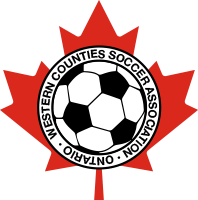In all sports, accidents and injuries can happen.
A professional medical opinion should be obtained if the case of any injury or suspected concussion.
The public in general has become more aware of the prevalence and seriousness of concussions. Concussions can have long lasting effects and should be taken seriously.
Below you will find some information that may be helpful. This information DOES NOT replace the consultation of a medical professional.
Concussion symptoms vary from person to person, no two concussions are identical. In fact, a person incurring a second concussion may not have the same symptoms as they had with their first concussion.
IF A CONCUSSION IS SUSPECTED BASED ON THE INFORMATION FOUND HERE A MEDICAL PROFESSIONAL SHOULD BE CONSULTED AS SOON AS POSSIBLE AFTER THE INJURY OCCURS.
CONCUSSION RECOGNITION – SCAT 3
The following information is taken from the SCAT 3. This concussion recognition tool is promoted by FIFA, the Olympics, and other major sports organizations.
Concussion should be suspected if one or more of the visible clues, signs and symptoms listed below are present. A medical professional should be consulted.
VISIBLE CLUES
- Loss of consciousness or responsiveness
- Unsteady on their feet, balance problems
- Dazed or blank look
- Confusion
- Lying motionless on the ground, slow to get up
Signs and Symptoms of Possible Concussion (this is not a complete list)
- Loss of consciousness
- Seizures or convulsions
- Nausea or vomiting
- Headache
- Dizziness
- Blurred vision
- “Pressure in the head”
- Sensitivity to noise
- Difficulty concentrating
- Dizziness
- Balance problems
- Neck pain
Any athlete with a suspected concussion should be IMMEDIATELY REMOVED FROM PLAY, and should not be returned to activity until they are assessed medically. Athletes with a suspected concussion should not be left alone and should not drive a motor vehicle.
If ANY of the following are reported then the player should be safely and immediately removed from the field. If no qualified medical professional is available, consider transporting by ambulance for urgent medical assessment.
Remember:
- In all cases, the basic principles of first aid (danger, response, airway, breathing, circulation) should be followed.
- Do not attempt to move the player (other than required for airway support) unless trained to so do
It is recommended that, in all cases of suspected concussion, the player is referred to a medical professional for diagnosis and guidance as well as return to play decisions, even if the symptoms resolve.
NOTES:
- Concussion symptoms do not necessarily happen immediately after the accident or fall. Sometimes the symptoms do not appear for hours or days after. Any player who has an injury should be on the lookout for concussion symptoms.
- A player may test as normal Under the SCAT 3 test but may still have a concussion. Seek medical attention if a concussion is suspected.
IF A CONCUSSION IS SUSPECTED BASED ON THE INFORMATION FOUND HERE – A MEDICAL PROFESSIONAL SHOULD BE CONSULTED AS SOON AS POSSIBLE AFTER THE INJURY OCCURS.
Additional Resources:
SCAT3
A standardized tool for evaluating injured athletes for concussion and can be used in athletes aged from 13 years and older.
Parachute Canada
A brief fact sheet about concussions and return to play guidelines.
Fowler Kennedy Sports Clinic
Offers sport concussion baseline testing for teams and individuals.
The Ministry of Health and Long Term Care
Search for ‘concussions’ and learn how to prevent, identify and manage concussions.
